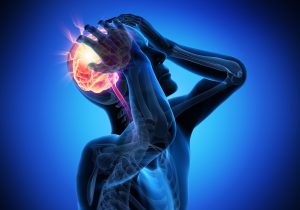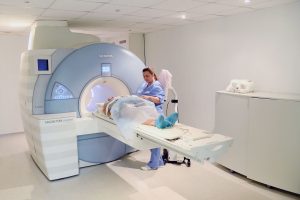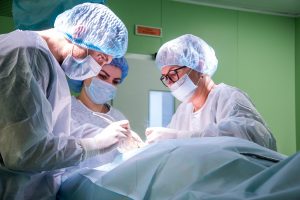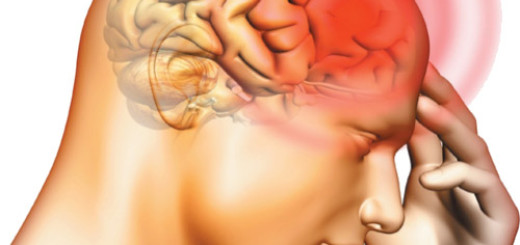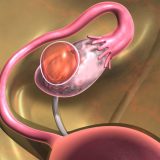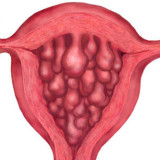One of the rather common diseases of the brain is considered to be a brain cyst. Retrocerebellar arachnoid cyst in particular. It is a benign tumor in the form of a bubble filled with fluid.
Retrocerebellar arachnoid cyst in most cases, forms as fluid accumulation in areas of the brain where there was destruction of the gray matter. It should be noted that it may be located in different parts of the brain. Each of the retrocerebellar arachnoid cyst, due to the location and size, has specific its features and methods of treatment.
The causes of retrocerebellar arachnoid cysts
The most common causes of this disease that cause brain cell death and the cyst, include:
-
- The lack of blood flow in the brain.
- Surgical interventions in the area of the skull.
- Heart stroke.
- Some kinds of inflammatory and infectious diseases. These include meningitis, meningoetsefalit and others.
- Traumatic injuries – bruises, concussion, which can cause the death of certain brain cells.
Retrocerebellar arachnoid cysts symptoms
Retrocerebellar arachnoid cyst symptoms are directly depended on the size of the cyst. Also of great importance is its location and causes of it.
The formation of small sizes usually don’t cause any symptoms.But if the retrocerebellar arachnoid cyst continues to grow and increase the fluid amount, the pressure in it also grows. As well as grow the pressure it gives on the neighbour tissues. So quite active symptoms may appear.
Big and growing retrocerebellar arachnoid cysts can cause neuroinfection, ongoing infectious process, chronic circulatory disorders, autoimmune processes in the brain, in particular multiple sclerosis.
The patient may have one or all of the following symptoms:
-
-
- headache;
- throbbing inside the skull;
- a temporary hearing loss, tinnitus;
- a feeling of fullness in the head, and high blood pressure;
- visual impairment – can appear spots before the eyes, blurred lines, double objects;
- complete or partial paralysis of the limbs;
- seizures;
- the sudden loss of consciousness;
- temporary or permanent numbness of the body or limbs.
-
Methods of diagnosis
The correct diagnosis must be made not only relying on the patient’s complaints and the patient’s medical history. In addition, modern research methods such as magnetic resonance and computed tomography must be performed.
To treat the cyst and prevent its relapse, you must first identify the cause of itsorigin. It takes particular kinds of medical examinations that can determine whether the cause is infections, autoimmune diseases, circulatory disorders and so on. Such examination can consist of:
-
-
- Doppler study of patient’s head and neck vessels. This procedure is performed to detect vasoconstriction, providing the brain with arterial blood. This deficiency of blood supply can lead to destruction of the gray tissue in the brain.
- The study of the heart. It is performed to identify arrhythmias, or heart failure.
- Analysis of blood clotting and cholesterol. Increased cholesterol and increased blood clotting may cause blockage of blood vessels, which leads to the formation of the retrocerebellar arachnoid cysts.
- Monitoring of the blood pressure. The periodic ups in blood pressure are often the cause of heart strokes and the formation of the cysts.
- Blood tests for infections and autoimmune diseases. They are carried out in cases of suspected neuroinfection, arachnoiditis, multiple sclerosis.
-
Treatment
In case when a retrocerebellar arachnoid cyst does not associated with any clinical symptoms, and medical examinations do not show its growth, and the size stays small, special treatment doesn’t required. Monitorig the cyst size dynamic at a neurologist and constant control over the state of the cyst is enough in this situation.
If there are any signs of the retrocerebellar arachnoid cyst increasing in size, increased pressure in the skull, the patient needs surgery. Before carrying out such an operation, the doctor must be sure to carefully examine the cyst. Especially if we are talkig about the cyst in the intracerebral structures.
The choice of method of surgical intervention for retrocerebellar arachnoid cyst suggest some options. The appropriate method to carry out is based on the location of the cyst and its size. Currently used three types of the transactions:
-
-
- Endoscopic punctures.
- Shunting.
- Neurosurgical operations, accompanied by craniotomy.
-
The endoscopic surgery is the most advanced and less traumatic surgical option for this purpose. This procedure is performed with an endoscope puncture the skull, after which the cyst is removed. Unfortunately, this method is not always possible to use. Because it is associated with the location of the cyst in the brain.
Shunting is carried out if retrocerebellar arachnoid cyst develops and there is a constant increasing of fluid in the cyst. During this operation the doctor input a special shunt into the brain cyst and the fluid outflows from the cyst.
If the cyst is located in an accessible location for craniotomy, surgery is performed on the complete removal of this formation with its walls. It should be noted that this procedure is a rathertraumatic.
The consequences of retrocerebellar arachnoid cysts
In the correct diagnosis and prescribe adequate treatment were made in time, the consequences of the formations are generally not observed. If there are any complications during or after surgery there may develop brain damage syndromes. Such as:
-
-
- cerebral syndrome – often develops after the surgery. It includes increased intracranial pressure, headache, intolerance commuting, stuffiness, etc.
- Spastic syndrome – may appear symptomatic epilepsy.
- Focal syndromes – may appear after the damage to any brain area that are responsible for a specific function. As a result, there may be faileurs of speech, vision, hearing, disorders of higher nervous functions, movement disorders.
- Asthenoneurotic syndrome. It is characterized by weakness, deterioration of immunity.
- Hypermobility syndrome or developmental delay in children with conduct disorder in adults.
-
Retrocerebellar arachnoid cyst often has serious consequences for health. To reduce complications risk after the surgical treatment be sure to take vitamins and medicines that help to improve blood circulation, strengthen the walls of blood vessels.
It is also recommended to keep a healthy lifestyle, do exercises, give up bad habits. By performing these simple recommendations, you can reduce the period of recovery after surgery and quickly return to normal life.
